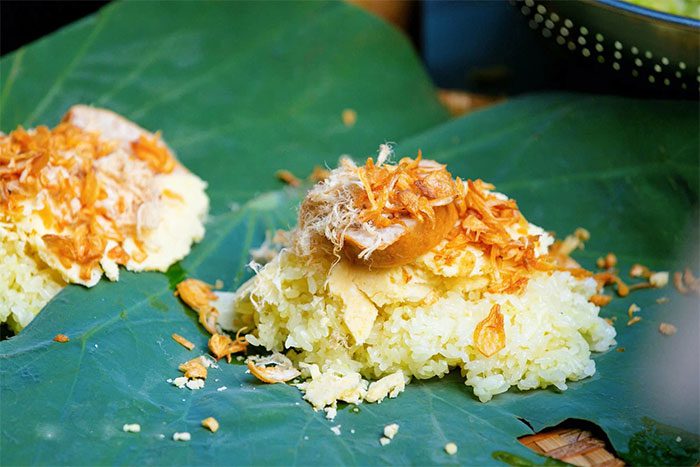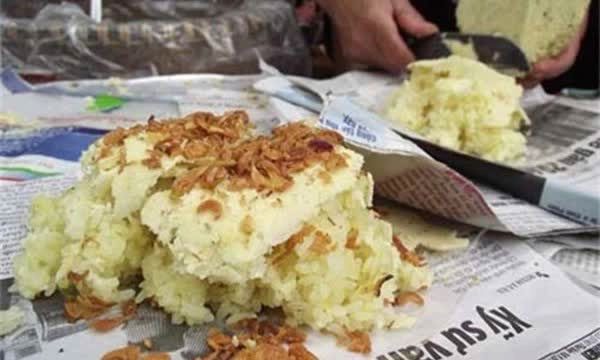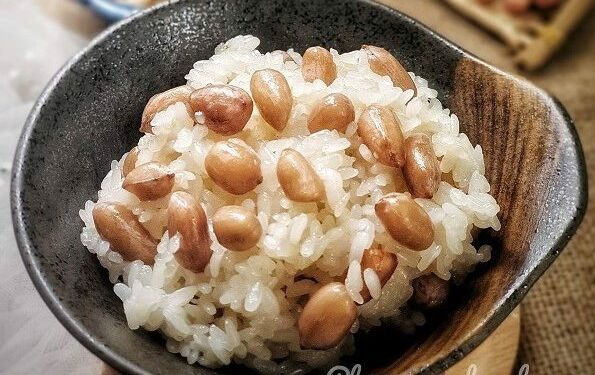We all know that breakfast is the most important meal of the day, typically eaten between 6-9 AM. Depending on the economic conditions of each family, breakfast often includes different dishes. The most common options might be rice, noodles, pho, or sticky rice.
Common Mistakes to Avoid When Eating Sticky Rice
Among these dishes, sticky rice is one of the most popular breakfast choices. With a variety of flavors such as corn sticky rice, yellow sticky rice, and peanut sticky rice, it appeals to both children and adults. However, overindulging in sticky rice or consuming it in an unscientific manner can lead to undesirable health risks.
1. Eating Too Much Sticky Rice: Rapid Weight Gain

If you are trying to lose weight, you should limit your sticky rice intake.
Although sticky rice is a highly energetic and nutritious food, if you are trying to lose weight, you should limit your consumption. On average, a serving of sticky rice can provide about 600 calories, while a bowl of regular rice contains around 130 calories and a bowl of pho has about 400 calories. Therefore, it is recommended to consume sticky rice no more than twice a week, and not to eat too much in the morning.
2. Eating Sticky Rice Wrapped in Printed Newspaper: Harmful to the Liver and Kidneys
One common mistake that few people notice when eating sticky rice in the morning is that the sticky rice is often wrapped in old newspaper. Importantly, newspapers contain many impurities and synthetic chemicals, especially the ink, which often contains a significant amount of lead that is dangerous for consumers.
According to Associate Professor Tran Hong Con (Department of Chemistry, Vietnam National University, Hanoi), the lead found in the wrapping paper does not dissolve in water and cannot be oxidized. Therefore, it accumulates in the liver, kidneys, and fatty tissues, posing health risks and potentially leading to symptoms such as memory impairment, tinnitus, dizziness, and nausea.

Newspaper contains many impurities and synthetic chemicals, with ink containing heavy lead that is harmful to health.
In addition to harmful substances such as ethanol, isopropanol, and toluene, newspapers also contain various other harmful agents like PCBs (Polychlorinated Biphenyls). Even if the newspaper is dry, lead, toxins, and heavy metals can pose health risks if inhaled or ingested. When exposed to high temperatures, lead can develop toxicity and become even more dangerous at normal temperatures. Therefore, using newspaper to wrap sticky rice significantly increases the risk of lead poisoning and should be avoided.
Moreover, the risk of bacterial contamination from old newspapers is also very high. From the time newspapers are produced, through their transportation, to when they are read and collected for recycling, and finally to the vendor selling sticky rice, they have come into contact with many hands and different environments. Consequently, newspapers can harbor numerous bacteria and dirt, jeopardizing human health.
3. Eating Sticky Rice When Feeling Overheated: Causes Discomfort and Worsens Health Issues

Sticky rice is warming and not suitable for those who often suffer from acne due to their naturally warm constitution.
According to herbalist Vu Quoc Trung (Hanoi Oriental Medicine Association), sticky rice has warming properties, making it unsuitable for individuals with a naturally warm constitution or those experiencing illnesses with fever, coughing up yellow phlegm, jaundice, or bloating. Such individuals should avoid sticky rice to prevent discomfort and worsening health conditions.
Additionally, those prone to acne should also limit their sticky rice intake. In traditional medicine, sticky rice is warming and unsuitable for those with a tendency to develop acne, as it can exacerbate their condition and increase internal heat.


















































